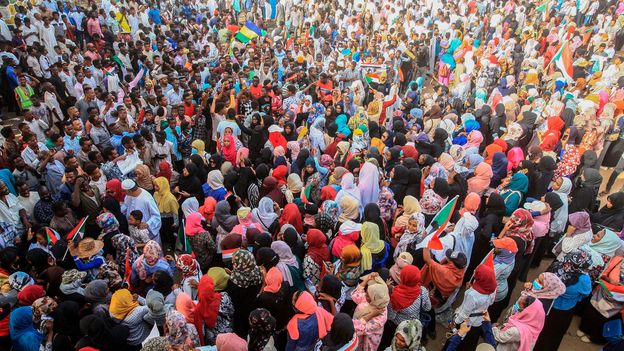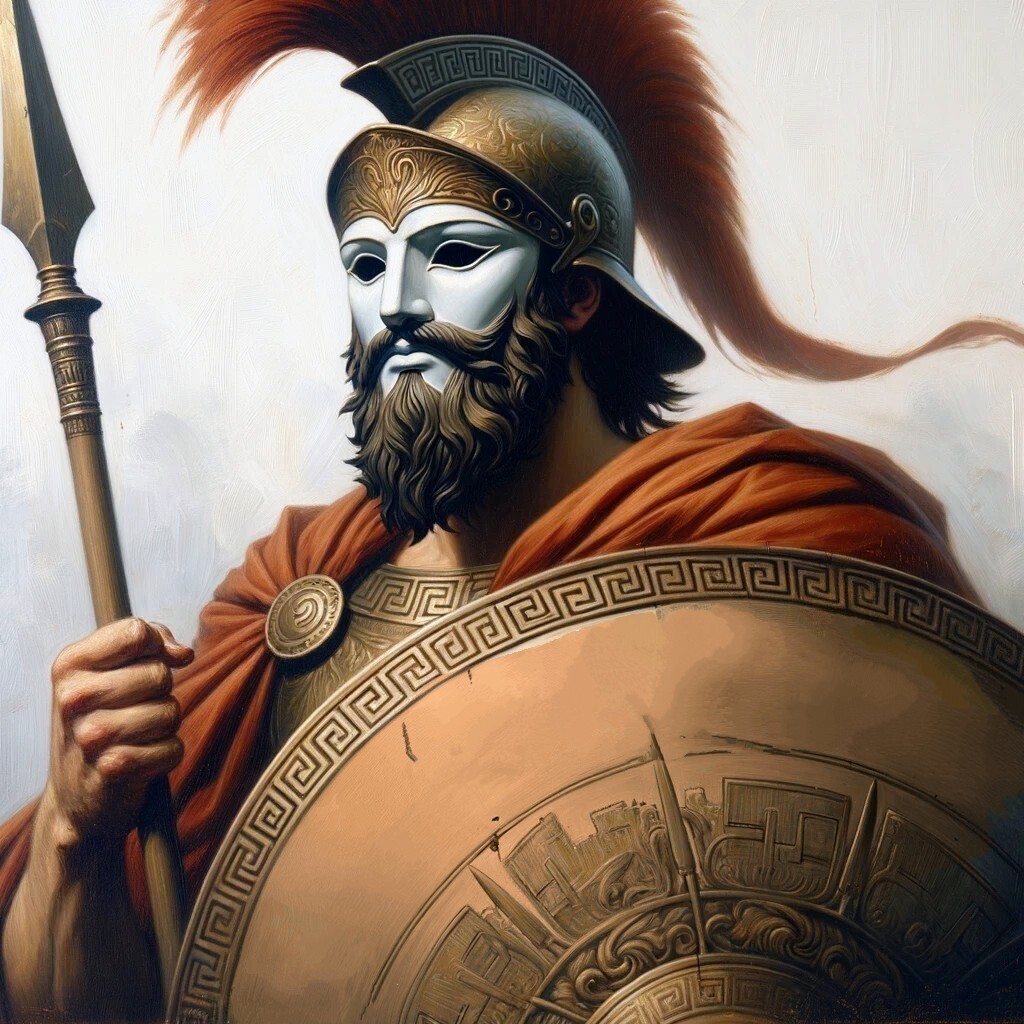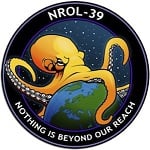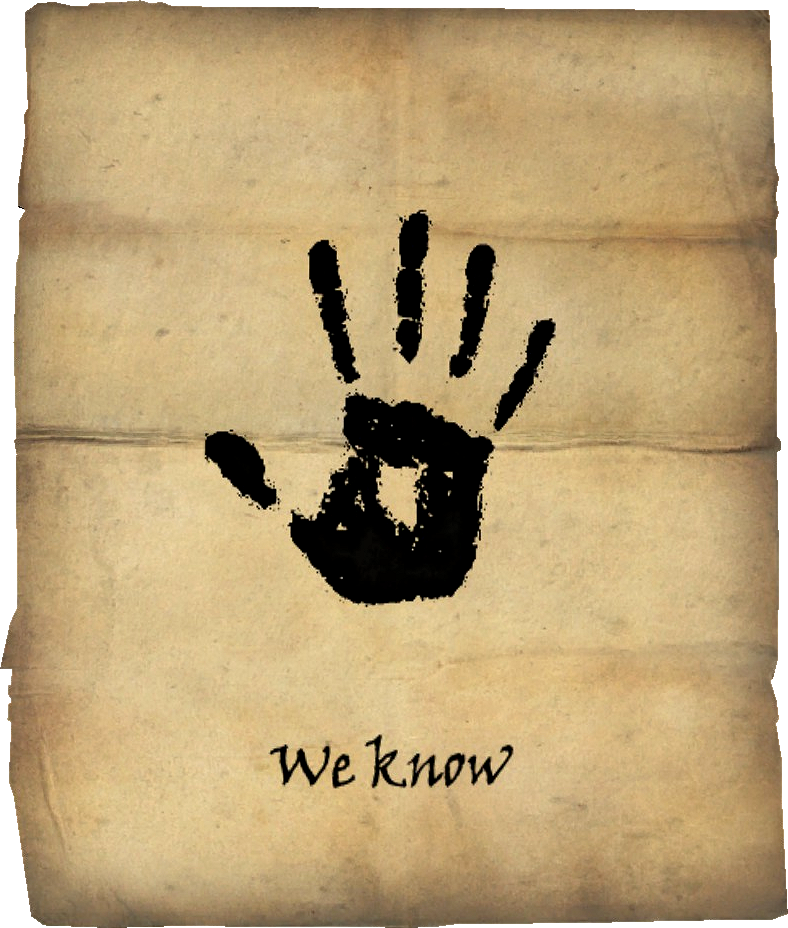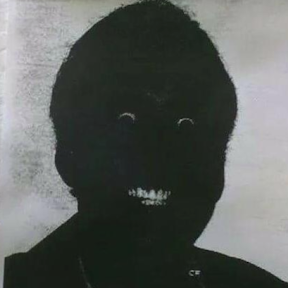- cross-posted to:
- todayilearned@lemmit.online
- todayilearned@lemmit.online
- cross-posted to:
- todayilearned@lemmit.online
- todayilearned@lemmit.online
Why Civil Resistance Works the book that 2x figure comes from has some major controversy about cherry picking data as well as playing with the definition of peaceful protest.
If peaceful protests worked (as good as this article suggestions) the BBC wouldn’t be writing about them.
Yeah, look at the Iraq war protests, they didn’t amount to anything because they were peaceful and easily ignored by the media.
This was going to be my counterexample too. Millions protested in the US, UK, Australia, and elsewhere before any troops were committed and it still didn’t help. I dont have solid numbers but I’d be shocked if less than 3.5% of people were involved. They were the biggest protests ever at the time.
I personally feel like a lot came out of it, though. The USA left Iraq for example.
The USA actually still had troops in Iraq, Syria, Jordan, etc. And the protests were to prevent an invasion from happening in the first place, not to go in, kill a million people and then 2 decades down the line throw up your hands and say ‘that was a mistake’ with no consequences for anyone that pushed for it.
In 2007 there were 170,000 troops in Iraq
In 2010 there were 88,000
In 2024 there were 2,500
And the number there should be is 0, I’m really not sure what point you’re trying to make here. People didn’t want a war in Iraq in 2003, there were mass peaceful protests, and yet it still happened.
The number absolutely should not be 0. It’s a nation which actively funds and mobilizes religious extremists who imprison or execute homosexuals and treat women as cattle.
EDIT: in this context Iraq/nation meant the local populace, not the government
Which wasn’t the case before the invasion, when there were 0 US troops. Why the fuck do you bring up current day when I’m talking about protests that happened over 20 years ago (by people who knew the current outcome was likely)?
post hoc ergo propter hoc. the invention of Facebook was just as much a cause of leaving Iraq. or flat screen TVs. or Blu-ray disks.
which is to say the protests didn’t change anything.
Politicians making decisions based on public opinion has a lot of cause and effect relation. By all accounts it would have been easier to maintain a 40k to 100k presence in Iraq than it was to pack everything up and leave.
please prove a casual link between protests and the ending of the war
-
People opposed the pointless war whose only winners were Exxo n Mobil.
-
People voted the party who started the war out of power.
-
The opposition party withdrew from the region.
doesn’t sound like the protest had any impact. sounds like the votes were the only thing that mattered.
-
deleted by creator
Peaceful protest works great under two conditions:
-
Just a metric fuckton of participants
-
The implicit threat of violent protest (e.g. Malcom X behind MLK)
- Your opposition has empathy
Meaning they aren’t somehow making money off whatever you’re protesting…
-
The article pointedly says that non violent protests were more successful because a lot more people were involved than in the violent protests.
Claims without any supporting evidence aren’t that interesting.
Edit: OP changed his post after I called him out for not referencing any sources
How to blow up a pipeline has a chapter on the topic.
You can also read the original book and check the examples.
P.C. this is article about the fourth mentioned protest in the article, and literally the second paragraph is about clashes. There are 11 casualties during this series of protests.
But you knew that with your high standards of verifying information right?
P.C. this is article about the four mentioned protest in the article, and literally the second paragraph is about clashes.
Which states
Clashes break out as police try to disperse the crowds and eight demonstrators are killed.
Police killing protesters makes a violent movement?
They’re not exactly an armed group of combatants coordinating attacks.
Working with Maria Stephan, a researcher at the ICNC, Chenoweth performed an extensive review of the literature on civil resistance and social movements from 1900 to 2006 – a data set then corroborated with other experts in the field.
Research.
How to blow up a pipeline has a chapter on the topic.
Research?
But you knew that with your high standards of verifying information right?
Do your standards measure up to that?
I’m not the one making claims. If you want to make a claim cite a source.
The article also made claims. Did you check them?
This is actually rewriting history.
The Philippines had multiple militant movements but notably the Reform the Armed Forces which had orchestrated and abandoned a coup that had popular support kicking off the protest movement.
Sudan was a military coup that overthrew bashir and then massacred protestors and was actually backed by American OSI NGOs.
Algiers street protests were illegal and they combined general strikes with police clashes and riots even though they were subjected to mass arrests.
For Ghandi MLK jr and others mentioned there were armed militant groups adding pressure. My take away is you need both approaches.
Without demonstrating the ability to defend your nonviolent protest with devastating results it just gets crushed. If you are militant with no populist public movement backing your ideals you get labeled as terrorists and assinated by the feds.
And you need backing of the mass public. Keyboard warriors who sit on their ass and don’t get out there won’t work.
are 2x more likely
Meaning, there can be instances where it’s true or not true.
66% of the time it works every time.
This is a really common misunderstanding of how nonviolent movements actually work, and frankly gets the causality backwards.
You’re right that successful movements often have both violent and nonviolent wings - but the nonviolent components don’t succeed because of the violent ones. They succeed despite them. The research is pretty clear on this: nonviolent campaigns are actually more likely to achieve their goals than violent ones, and they’re more likely to lead to stable democratic outcomes.
Nonviolent movements get labeled as extremist precisely when they’re associated with violence, not when they’re separate from it. The Civil Rights Movement’s greatest victories came when they maintained strict nonviolent discipline - Birmingham, Selma, the March on Washington. Every time violence entered the picture, it gave opponents ammunition to dismiss the entire movement.
The “good cop/bad cop” theory sounds intuitive but doesn’t hold up to scrutiny. What actually makes nonviolent resistance effective is mass participation, strategic planning, and moral leverage - not the threat of violence lurking in the background.
You talk about research, so I’m curious: has any nonviolent campaign succeeded without an accompanying violent campaign?
Yes, but it’s complicated. I’ll use Iran’s long tradition of nonviolence as a case study.
In the late 1800’s when the shah tried to sell out tobacco farmers to foreign exploitation, and virtually everyone in the country opposed it, resulting in a tobacco boycott. Virtually everyone in the country participated it, including members of the shah’s own harem, and religious leaders issued a fatwa condemning anyone who violated it. The shah was forced to cave to pressure and reversed the decision.
This boycott movement helped for organization that would set the stage for later (largely peaceful) protests that led to the shah signing a constitution and establishing a democratic parliament. Unfortunately, he died shortly afterwards, and his son was much less cooperative, and called on foreign assistance to shell parliament, and successfully restored himself to power.
During WWI, Iran was invaded by the Ottoman, British, and Russian Empires, and the country suffered greatly from disease, famine, and the Armenian genocide, leading to over 2 million civilian deaths during the period. The Qajar dynasty collapsed, as did the Ottoman and Russian Empires, allowing Britain to dominate the power vacuum. They supported the new Pahlavi dynasty into power, there was a parliament, but the shah generally appointed whoever the British told him to as prime minister.
At this point, oil had been discovered in Iran, and the Iranians were stuck with an awful, exploitative deal that the previous dynasty had signed, as part of their general policy of selling out every part of the country to foreign colonizers so the shah could have a bigger harem. This deal was substantially worse than the general deal the US offered (which was generally 50/50 between the country that owned the oil and the country that built the infrastructure to extract it). But the terms didn’t actually matter because the British violated them all the time, vastly underreporting how much oil they were extracting so that they paid virtually nothing, and the Iranians had zero oversight of their records. Britain relied on this oil to be one of the richest and most powerful nations on the planet, while the Iranians remained some of the poorest people in the world.
For the next several decades, the Iranian people repeatedly asked Britain very nicely if they would possibly consider not stealing all their oil. And for those decades, the British completely stonewalled them, refused to consider any sorts of concessions whatsoever. Even with their own, hand-picked prime ministers, they still stonewalled them.
Finally, in the 1950’s, and a peaceful democratic movement successfully pressured the shah to appoint a popular leader, Mohammad Mosaddegh, as prime minister - the shah finally became more afraid of popular discontent than he was of the British. Mosaddegh, after making attempts to negotiate, made a decision with overwhelming popular support, to nationalize the oil industry. This, however, led the British to impose a blockade, crippling the country’s economy.
Mosaddegh was an idealist, and he believed the Americans would see his cause as just, connect it to their own revolution, and back him up against the British. At this point, most Iranians had neutral or positive views of the US, seeing them as well intentioned, if naive, not understanding how long the Iranians had been struggling against British colonialism. All of these perceptions were proven completely wrong, because, rather than backing them up, Eisenhower agreed to use the CIA to overthrow Mossadegh to protect BP’s profits and to ensure British cooperation with NATO and the Korean War. This was the first of the CIA’s coups of democratic governments.
A stark example of this betrayal is that, the day before the coup, a US ambassador called Mossadegh and fed him a false story about how his supporters had been calling the embassy with death threats, and he was afraid he’d have to shut it down. Mossadegh - who had refused to crack down on (CIA funded) protests, or censor the (CIA controlled) press, or seek aid from the Soviets, or otherwise do anything to disrupt the infiltration out of concern for principles and respecting dissent -then issued as public statement calling for his supporters to cool it and stay off the streets. When his residence was attacked, no one was on the streets to come to his aid. He lived out the rest of his life under house arrest, while the shah used his absolute power to hunt down and exterminated the Iranian left - until he finally crossed the US and was himself overthrown by the current government.
When the stakes were low (from a geopolitical perspective), like, some poor tobacco farmers trying to maintain their (still quite poor) lifestyle, nonviolence worked. When the stakes were higher, like, changing the whole structure of the government, nonviolence worked better than one might expect, but generally encountered violent resistance and counter-revolution and fell apart. When the stakes were very high, like, trying to get a world-spanning empire to stop stealing the resource it needed to dominate the world, nonviolence was not very effective at all.
Being in Iran’s position, it really wouldn’t matter what they did to try to appease Westerners, so long as they assert control over their natural resources - so they don’t really bother. The goal of nonviolence is to be “in the right” but Iran’s history proves that you can be 100% “in the right” and still lose because foreigners don’t know/care about what’s being done to you, or are propagandized to side with the oppressor.
This doesn’t necessarily apply to protests in the US, but it can. If you’re a nonthreatening old white lady and your goals are not too disruptive to the empire, then sure, do nonviolence. But if you’re someone who the news could villainize, who people will assume the worst of just because of your race or religion, then they’re probably going to characterize you as violent whether you are or not. And if your goals are something that would disrupt the ruling class’s hold on power, then understand that the only reason they aren’t gunning you down is that they aren’t afraid of you - the real dangerous part about nonviolence is that it can be effective, and if power is threatened it will respond with force.
The research is pretty clear on this:
Lol. What was the methodology on this “research”?
The Nonviolent and Violent Campaigns and Outcomes (NAVCO) Data Project is the world’s leading dataset on the characteristics and outcomes of nonviolent and violent resistance campaigns. The latest version covers 627 mass mobilizations in every country in the world from 1900-2021. The coverage is global but excludes maximalist campaigns (i.e. those seeking to overthrow an incumbent government, expel foreign military occupation, or secede).
Chenoweth and co-author Maria J. Stephan published their first analysis of the comparative outcomes of nonviolent and violent resistance campaigns in the 2011 book Why Civil Resistance Works: The Strategic Logic of Nonviolent Conflict. In this book, the authors aggregated data from 1900–2006 and concluded that, overall, nonviolent civil resistance was more successful in achieving target outcomes than campaigns that use violence. The more recent dataset featured in the interactive tool confirms this trend and extends it into the past decade.
That didn’t remotely answer my question.
I directly answered you and provided sources and background.
Maybe try reading on your own without a mentor for granting you reading comprehension
No you didn’t. I asked for the methodology, you didn’t even remotely answer that.
Maybe try not lying about things that are easy to check.
What was the lie? You sound like a sealion, the reference provided was a solid one.
If you want to question the Harvard Kennedy schools methodology then you can provide the evidence.
I think what they’re looking for in terms of methodology is what objective criteria they use to determine if a protest is violent or nonviolent, as well as what constitutes success or failure. These are not trivial questions, and there’s lots of debate surrounding virtually any given movement, so to make objective determinations about a large number of such movements raises the question of how they’re resolving all these questions and debates. Some might argue that such questions are inherently political and up to interpretation.
As another user in this thread pointed out, it may be a case of confusing correlation with causation: if a movement is popular, it may be more likely to succeed and more likely to be considered nonviolent, as compared to a less popular movement employing the exact same tactics.
It did give the info needed to find this.
Violent campaigns on the other hand were defined as follows: “Violent resistance […] involves the use of force to physically harm or threaten to harm the opponent.” (Chenoweth/Shay 2020: 5). Violent campaign data was primarily collected from different databases including: The UCDP Armed Conflict Database, the Correlates of War database on intra-state wars (COW), Clodfelter’s encyclopedia of armed conflict (2002), and Kalev Sepp’s list of major counterinsurgency operations (2005) (Chenoweth/Shay 2020: 5). To note is that should a campaign at some point during its lifespan shift from a non-violent campaign to a violent one or vice versa, that this campaign is then coded as two separate campaigns (Chenoweth/Shay 2020: 7).
This led me to believe they are analysing in a vacuum but that would only really be true for the Philippines example.
This review is a fantastic in depth analysis of the data and outcomes when violent flanks (apparently the research term describing the parallel movements that are not nonviolent) are included.
https://www.annualreviews.org/content/journals/10.1146/annurev-polisci-051421-124128#f1
Two tables analyse the purported and contradictory outcomes of the flanks in different research projects and papers. The authors conclusions are interesting to me in that he or she believes them to reduce long term success and increase short and mid terms, and also poiints out other factors in table 3 that affect the outcomes. One thing eluded to is that the societies perception of the movements being majority violent or non violent is actually the determining factor in the outcome and that I agree with in societies that presuppose nonviolence as a determining factor for success. I imagine nonviolence is a lit less important when you see yourself as occupied by an external force.
Thanks! That’s very comprehensive.
deleted by creator
Okay but who’s the one defining a protest as violent? You get enough people together and you’re going to have some aseholes that damage property but are the minority. If chocolate can have 5% bugs, then protests should be able to have 5% violence and still be called peaceful.
Or heck, if people react when police instigate, should that be called a violent protest?
Okay but who’s the one defining a protest as violent?
I’ll give you a hint, it rhymes with cocks
It’s it wrong to throw rocks when people are shooting you with rubber bullets?
Socks?
And Birkenstocks
Rocks.
Docks!
Rocks?
The guys with Glocks? Agreed.
Cops are great at making any protest violent.
This is an important question. I believe the research in question defined movements by the predominant tactic used, even if there was a small amount of violence.
So protests like the anti-ICE ones in LA would probably count as non-violent in the research.
Edit: Here is a more recent work by the same author that more directly engages with some of the questions and criticisms that emerged from their initial work the BBC article is discussing.
https://www.annualreviews.org/content/journals/10.1146/annurev-polisci-051421-124128
History is written by the victors.
Okay but who’s the one defining a protest as violent?
From the article
Perhaps most obviously, violent protests necessarily exclude people who abhor and fear bloodshed, whereas peaceful protesters maintain the moral high ground.
Chenoweth points out that nonviolent protests also have fewer physical barriers to participation. You do not need to be fit and healthy to engage in a strike, whereas violent campaigns tend to lean on the support of physically fit young men. And while many forms of nonviolent protests also carry serious risks – just think of China’s response in Tiananmen Square in 1989 – Chenoweth argues that nonviolent campaigns are generally easier to discuss openly, which means that news of their occurrence can reach a wider audience. Violent movements, on the other hand, require a supply of weapons, and tend to rely on more secretive underground operations that might struggle to reach the general population.
Violent protests seems to mean a violent campaign of armed, planned attacks.
I doubt that would include unplanned outbreaks of violence from people not organized for that purpose.
We can have a little violence. As a treat!
Okay but who’s the one defining a protest as violent?
The same people who write the history books. History is written by the winners, and when they write those books the protests that led to them winning are written up as being non-violent. It’s like “terrorists” vs. “freedom fighters”. If they succeed, they get to write the history books and they’re freedom fighters. If they lose, the other side writes the history books and they’re terrorists.
I don’t want to ask about the chocolate
Are you arguing “it’s just a few bad apples” in defense of protests?
This is awkward.
YES, protesters are freely associating members of the general public, whereas the police are vetted and trained professionals, payed by taxes to “uphold the law”.
They should be held to a higher standard!Well duh. Just was kind of funny.
I assume you’re comparing this to rhetoric around cops. Cops are ideologically and organizationally unified with top down command structure and they protect one another even in cases of wrongdoing or violence.
Most modern protests are just random people who chose to show up. These are totally different situations.
Of course they’re totally different. But it’s a funny comparison since the two groups are so related.
You’re right. We should fire the bad protestors.
And end qualified protestor immunity!
Bravo. I laughed. I just thought the initial comparison was silly.
Soros HR is no joke!
/s
What is awkward is how you failed to realize how insanely dumb and context-free your logic is to come to such an assinine conclusion…
Or how you presume there’s any conclusion or point. Just a silly observation. The two groups, protectors amd cops, are very related. It’s just a silly comparison. I’m not arguing any actual point.
Sensitive bunch. I’ve literally agreed with ACAB for a long time.
Is this why the opposition always tries to escalate the peaceful movement into a violent one?
That, and so they have an excuse to incarcerate or kill the leadership, see: Haymarket 7, Joe Hill, &c
No, it’s because the opposition is the establishment, and violence is a tool the establishment uses to… well, stay established.
YSK, This is blatant propaganda
by a state broadcasting org published by the state that held onto its colonial possessions until it was literally untenable without violence.
Nelson Mandela: “Choose peace rather than confrontation, except in cases where we cannot move forward. Then, if the only alternative is violence, we will use violence.” (I feel like a boomer posting azquotes but people are going to keep erasing recorded history so I might as well try)
Also to note, that potential violence is still violence. “peaceful” protests with over 3.5% of the total people generally do as well on the implied potential violence. Movements that will never go hot have no power.
100% agreed, this line of arguing is how they’re trying to keep us docile.
This book completely changed my view on non-violent resistance movements a few years ago. Highly recommended.
“How Non-Violence Protects the State” (Peter Gelderloos)
Ebook: https://theanarchistlibrary.org/library/peter-gelderloos-how-nonviolence-protects-the-state
Audiobook: https://youtu.be/CSo1PGWojxE
What do you mean ! Women got the right to vote by asking nicely, so did workers when they got the 40h work week. Same for black people and civil rights, all was achieved by gently kissing the ruling class boots.
And now in June, we celebrate the queer community’s liberation, which totally happened by walking up to a politician and asking “hey can we please not get assaulted and thrown into prison or a mental ward for existing? 🥺”, to which the politician responded “oh, I’ve spent my entire life thinking you guys were perverted mentally ill sinners that should be drawn and quartered, but sure! ☺️”
bingo.
Winner winner chicken dinner!
if you’re arguing that violence is a poor way by which to shape a society, preach that to the police. it’s literally what they do for a living.
I wish I could super upvote this.
Oh, but it’s use of force and not violence when we do it!
Also what these articles always fail to consider: Usually protests become violent when peaceful protests have failed. So violent protests often face something that is much harder to change/politicians are more unwilling to change. So of course they are less often successful. Not because they are less effective, but because the nature of their demands is different.
American Revolution. French Revolution. Iranian Revolution.
Just a few very violent, and successful, revolutions.
I heard a saying once (I cannot remember the provenance) that could be paraphrased like: “The liberal is someone who is for all movements except the current movement; against all wars except the current war.”
There are two important points:
- Every major movement in history has incorporated elements of violence;
- Which movements we retroactively consider as violent is determined by sociological consensus.
For example, the American civil rights movement is today considered by people to have been largely non-violent. However at the time the movement’s opponents definitely thought of, and portrayed it as a violent enterprise.
Opponents of a movement will always portray that movement as violent. The status-quo consensus perspective on historical protests is written by the victors. Therefore, the hypothesis that “non-violent” protests are more likely to succeed than “violent” ones is self-fulfilling. When protest movements succeed we are less likely to consider them “violent”.
Climate protesters in Britain got years in jail for even planning to peacefully protest on a motorway. Fascism is already here, folks. And fuck The Sun
“There weren’t any campaigns that had failed after they had achieved 3.5% participation during a peak event,” says Chenoweth – a phenomenon she has called the “3.5% rule”.
Me scatching my head thinking,“10% of Hong Kong protested and still got stomped by China’s boot.” I suppose it could be argued that it’s not the same thing.
Maybe Hong Kong counts as a military occupation? I mean, I doubt if 3.5% of Ukrainians protested that Russia would just leave, so external occupations probably don’t count.
the Arab spring also springs to mind.
Many Arab Spring revolutions did work; they were just swallowed by counterrevolution later.
3.5% of the people work all the time if you cherry pick your data.
I think the research was done prior to that event. It’s a bit dated at this point.
Also, it’s a bit ambiguous how to count Hong Kong as a semi-autonomous region in China. Should you measure by percentage of Hong Kongers or percentage of Chinese? I might think the latter, since they’re subject to the force of that nation.
Hong Kong was supposed to be free to control itself until 2048, democracy and free speech etc. China the decided that Hong Kong was starting to getting a little too free and started to tell the sitting president to shut the protests down.
China eventually took back control and instituted a national security law that could be used for pretty much anything after the crackdown didn’t quell the unrest.
I was actively following it live as it unfolded. It was very sad to see how much young people fought for basic freedoms and still lost it.
I remember being torn between my general non-violence stance and also understanding the protestors reciprocating the police violence.
I don’t think we can accept your argument, because in point in fact Hong Kong was an independent country. Certainly trying to disagree but now we’re getting into a definition question, but if that’s going to stop us from applying the proposed principle, then we can do that in every situation.
HK has literally never been independent, it went from being a Qing fishing village to a British concession, to a British overseas territory and then to a PRC special autonomous region.
It came close to full autonomy during the end of British rule and the start of PRC rule (before Xi), but it never has been independent.
Hong Kong was an independent country
Not too sure about that. PRC’s PLA has literally been in HK since 1997. You can’t really call yourself “independent” when you have an outside force occupying you.
Taiwan does have its own military, so that’s why they are considered de facto independant.
Non violent protests only work when there’s a threat of violence backing them.
eg Ghandi succeeded for this reason.
“Our words are backed by nuclear weapons”
-Mahatma Gandhi, Circa 2010

The phrase “Gandhi’s words are backed with nuclear” refers to a popular internet meme and in-joke related to the video game “Civilization.” In the game, Mahatma Gandhi, known for his non-violent philosophy in real life, has a tendency to become surprisingly aggressive and develop nuclear weapons in later stages of the game. This has led to the humorous association of his name with nuclear power, despite his actual historical stance.
IIRC that was caused by a buffer underflow, his probability to try to go nuclear was set to literally zero, which was stored in an unsigned int, and in-game policies reduced it further, causing a nuke-maxing ghandi
Wow, that makes this thread all the more awesome. Thanks!
Hey it’s me the fun ruiner here to ruin your fun.
Nuclear Ghandi was mostly a myth until Civilisation V where it was deliberately programmed in.
Also the concept of an integer wrapping around below it’s minimum value is still integer overflow, just like wrapping above it’s maximum value. Underflow does exist in the context of floating point numbers, when a calculation produces a result too small to represent in the floating point schema.
Buffer overflow is putting more elements into an array than can fit in the array, therefore trying to write beyond the end of an array. They’re a super common form of vulnerability exploit, particularly in older programs written in C. Buffer underflow is when something consuming from a buffer consumes faster than it is filled, and so empties the buffer. I didn’t actually know this term before making this comment.
Yeah, it gets violent because the power in place provokes it, either directly or inderectly (like not letting people protest).
So how do you keep the police from making it violent?
Let me know what all the peaceful protests on climate change did leading up to and since the Paris Agreement.
Civil disobedience, including violent action, absolutely has a place in changing the policy of the state.
Sure, a poor uneducated place.
Anyone who makes peaceful revolution impossible makes violent revolution inevitable.
Lmao I love that people still reply to you when your name is trollception.
Well done.
List all the regimes that weren’t brought down by peaceful protests and singing kumbaya. No worries we will wait.
Czechoslovakia’s Velvet Revolution was one instance, assuming you squint and ignore all the NATO soft power involved.
The 2018 and 2024 Armenian Revolutions also technically qualify. Although, the fact that they had two in six years raises questions of their effectiveness.
2024 Armenian Revolutions
A “Revolution” lol that didn’t do anything and was hardly even noticed by the locals in Yerevan.
Um, you sure you don’t mean all the regimes that “were” brought down by peaceful protests and singing kumbaya? Either way I really don’t have the desire or time to look any of that up for you.
Ah, so you agree there IS a place though.
It’s also important to remember that non-violence serves the interest of entrenched power. The state is at its core a violence-control structure. When people excersize the power of violence in their own interests, the state must reassert it’s dominion or risk collapse.
Non-violent requests can be accommodated without elites feeling like their ill-gotten power is threatened. But it’s often the violent demands that scare them into doing so.
My theory is that you need both. You need figures that are non violent, but also the threat of more violent leaders around the corner if the non violent ones get ignored. You need Malcolm X to make MLK look like the compromise.
The phrase that’s been rolling around my head is “credible threat of violence”.
100%. A credible threat of violence is the real sweet spot, it’s the currency that the whole world operates by. Actual violence is primarily only useful for establishing that threat.
Like, Brian Thompson was an evil person but he was just a cog in a machine and not that hard to replace. However, his killing spooked the industry, and at least for a time, they stopped denying so many claims, which saved many lives - because there was a credible threat that if they deny someone’s claim, they (or someone who cares about them) might kill those responsible. On the other side of the equation, the state was very concerned about finding the killer/someone to pin the blame on, because they needed to establish a credible threat of violence against anyone who might follow his example.
People in America seem to love “going postal,” just one big dramatic act that only you know about and that you won’t walk away from. But that doesn’t really set up a credible threat for the future. Thompson’s killer at least had the good sense to try to get away - if he did, then he could continue providing a credible threat, and he would also provide a “proof of concept” for people looking to fight back without necessarily dying.
Ideally, if you could have a more formal organization that could lay out demands and red lines, it would add to predictability and help keep the threat of violence consistent and predictable. Otherwise, there’s just a vague sense that maybe someone out there will be set off by something, but it’s hard to negotiate with that, hard to say which actions might set someone off. Stochastic violence isn’t ideal, but if more formal organizations are subverted in the various ways they are, then violence becomes less controlled and directed, and the credible threat of violence becomes harder to establish.
I think you are equating those with disruptive. Peaceful doesn’t necessarily mean non-disruptive. Peaceful and disruptive protests can certainly still make people in power sweat
Strikes are peaceful and disruptive
Shutting down freeways can be peaceful and disruptive
Boycotts are peaceful and can be disruptive
Sit-ins are peaceful and can be disruptive
etc.
Not that 3.5% is necessarily an iron-clad guarantee
Absolutely. We are seeing some great civil resistance tactics in the anti-ICE protests right now. These are quite different from rallies where people just stand around, they are actually interfering with ICE and slowing down their abducitons. If enough people participated, they could shut them down altogether.
That said, it’s risky too. The police will retaliate with violence, which sucks if you are the recipient. But the imagery of peaceful protesters being attacked is great propaganda.
Tell that to Hong Kong demonstrators on June 16, 2019, estimated by organizers at 2 million people marching. Hong Kong had a population of 7.5 million at the time.
Sure there was violence both before and after that protest, but mostly caused by violent crackdown by police.
But did it fail because there was violence or was violence a sign of stronger opposition? Causation vs correlation and all that.
my fucking ass 👅🥾
Bolsheviks, Stonewall riots, suffragettes, all famously peaceful movements that got their rights by staying on their knees and asking nicely.
Those are successful, yes. But then you have Arbenz’s Guatamala and the FARC in Columbia and the Tamil Tigers in Sri Lanka and democratic revolts in Hong Kong and Kashmir and the French Revolution and the Polish Resistance and the failures of socialist revolts across Africa and the Middle East.
I think part of the problem is how we define “successful”. Because it’s easy to see how the Spanish Anarchists failed to defeat Franco. Meanwhile, we largely consider the Civil Rights Era in the United States a success, despite many of its leaders being assassinated and its efforts quashed and undo under the Nixon/Reagan Era.
Militant insurgencies end when they are crushed by police/military. Peaceful protests don’t “fail” nearly so dramatically, they just fade away.
Psst, just a friendly reminder: it’s Colombia with two O’s and no U :) just a little pet peeve of mine.
democratic revolts in Hong Kong LOL you mean the CIA paid failed attempt at destabilisation?
Hong Kong residents have been demanding democratic reforms since British colonial days. A shame Americans only seem to care when protesters start waving MAGA flags. But this has been a failed campaign going on 50 years easy.
Y’all are out in full force today, huh
EDIT: since it seems like it needs clarification, the person I replied to was being sarcastic, the Bolsheviks obviously didn’t win without violence…
well where the hell could I go
Outside and touch grass? Where I am it’s beautiful and sunny out. Go for a run.
Outside and touch grass?
Wait till this guy finds out about cell phones
I just came indoors
To be fair it would be illegal to do so outdoors.
literally 1984 😔
How does the boot taste?
1 to 100 with a lot of you isn’t it?
How about just a healthy life balance?
I don’t think boot counts as 1 of your 5 a day honestly
You must be a riot at parties.
Countering the astroturfed “take it up the ass and do nothing useful campaign”? Why would anyone do that?
deleted by creator


